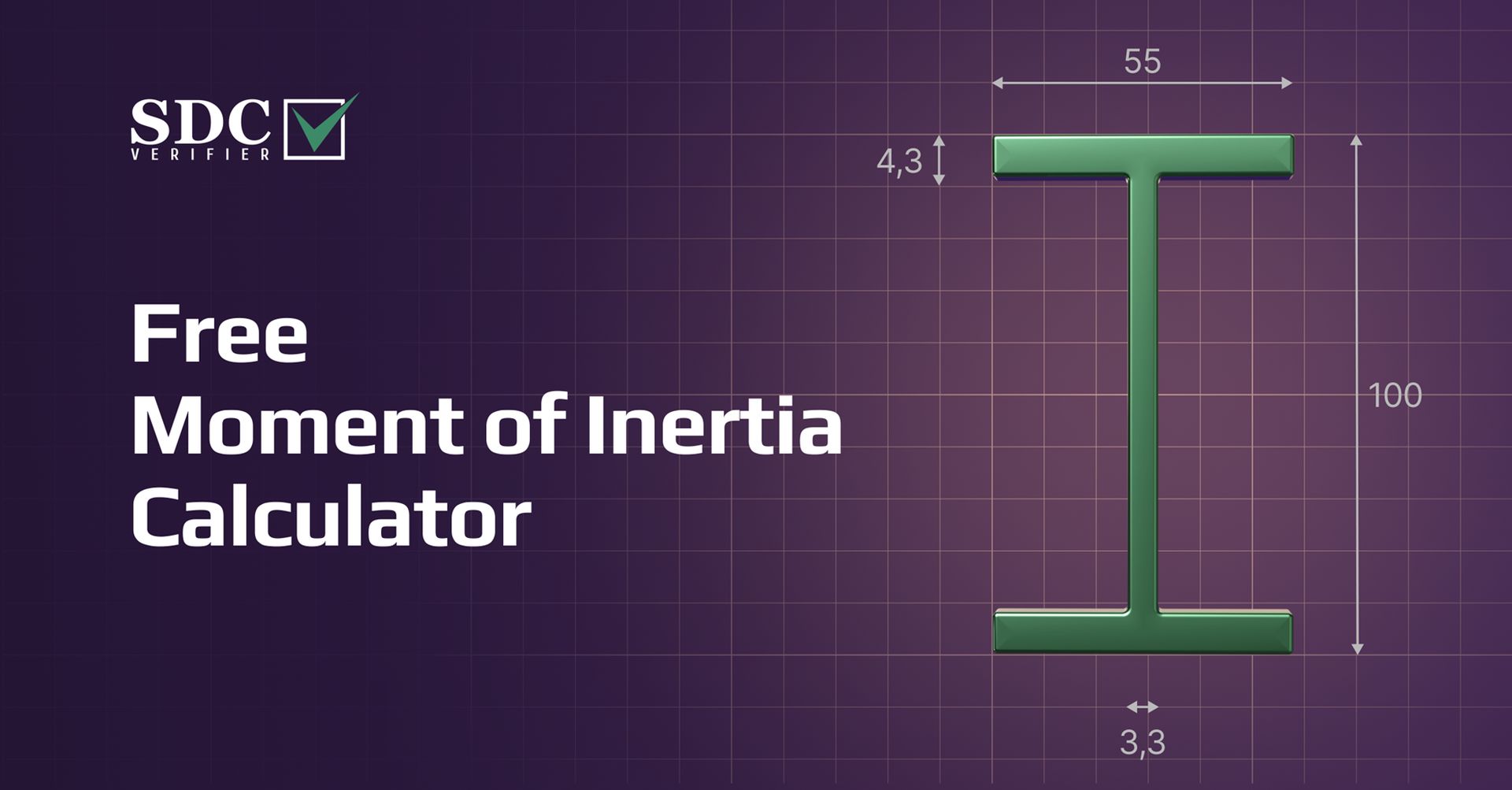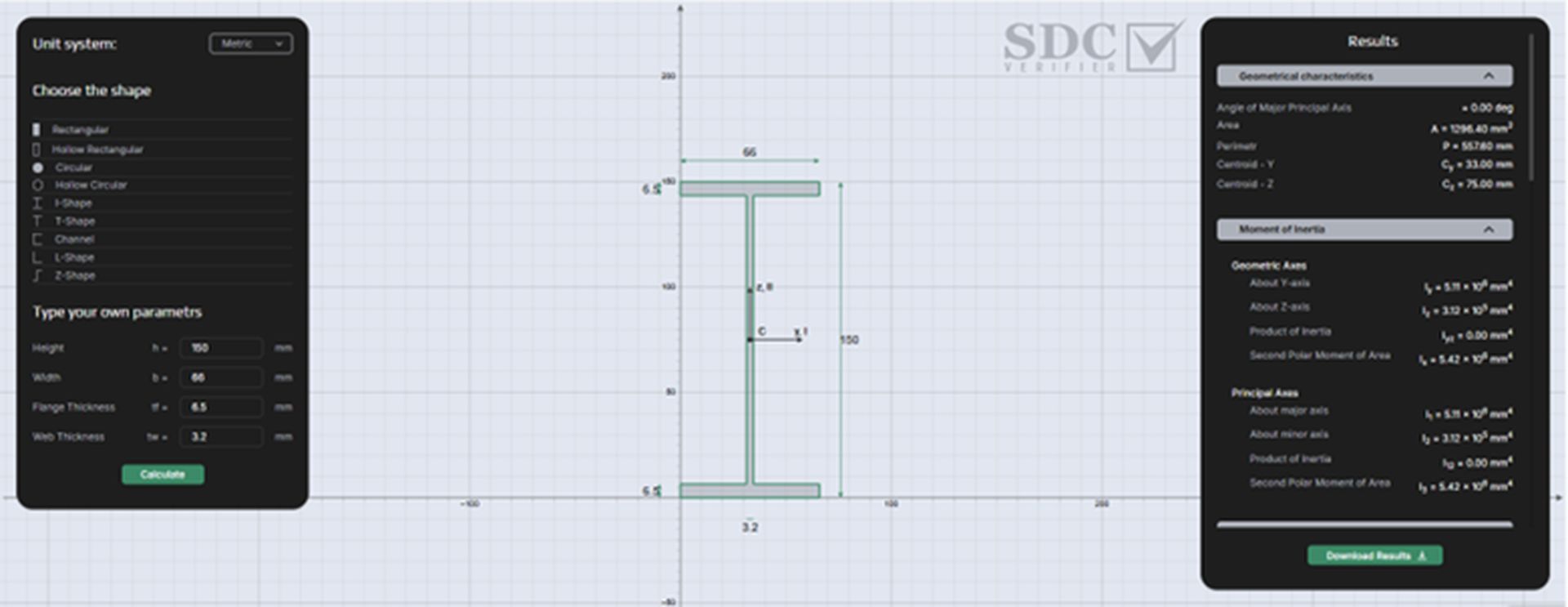Engineers spend up to 30% of their project time performing calculations and verifying design data, according to research. Even small mistakes in these calculations can lead to costly redesigns or safety risks.
This is where modern free online tools are making a significant impact—cutting calculation time, reducing errors, and providing instant results. One standout example is SDC Verifier’s free moment of inertia calculator, a precise, browser-based tool that simplifies one of the most fundamental tasks in structural and mechanical engineering.
As technology evolves, accessible online tools are poised to become even smarter, faster, and more collaborative, reshaping the way engineers approach design and analysis.
Why engineers seek free online tools?
Engineering is a field where precision, speed, and accuracy intersect daily. Whether designing a crane, a FPSO, or a manufacturing system, engineers face constant demands for detailed calculations and accurate modeling. Traditionally, these capabilities required expensive, specialized software, often accessible only to large companies or institutions.
Free online tools like moment of inertia calculators have changed that landscape by removing cost barriers and making professional-grade calculations available to anyone with an internet connection. They allow students, independent engineers, and small firms to access advanced resources without investing in costly licenses or time-consuming installations. This democratization of technology fosters innovation, speeds up the design process, and encourages continuous learning across the engineering community.
By simplifying repetitive tasks, online tools also reduce the chance of costly human error. Engineers can quickly verify results, compare alternatives, and make decisions with greater confidence—without the delays that once came from manual computations or waiting for a workstation license to free up. Let’s look closer at free online moment of inertia calculators – the most used free tools in engineering sphere.
Spotlight: SDC Verifier’s free moment of inertia calculator

The free moment of inertia calculator by SDC Verifier is a prime example of how specialized engineering tools can be both powerful and accessible. Built with structural and mechanical engineers in mind, it offers quick, accurate computation of essential section properties that are critical in both design and analysis.

It supports a variety of common profile shapes, including rectangular, hollow rectangular, circular, hollow circular, I-shape, T-shape, channel, L-shape, and Z-shape. This wide range ensures that most standard engineering scenarios can be covered without the need for custom scripting or manual geometry breakdowns.
Beyond calculating the moment of inertia, the tool determines section area, perimeter, centroid coordinates, and the rotation of principal axes. This means an engineer can go from defining a shape to obtaining all the key geometric and inertial properties in just seconds. In real-world workflows, that speed translates into more efficient design reviews, quicker feasibility checks, and better-informed engineering decisions.
Trends shaping the future of free online engineering tools
AI-enhanced engineering calculations
Artificial Intelligence (AI) is rapidly becoming a core feature in engineering software. By analyzing patterns and automating repetitive calculations, AI can drastically reduce the time it takes to run simulations and verify designs. A study in MoldStudy found that AI-driven methods can cut simulation times by up to 50%. For a tool like SDC Verifier’s moment of inertia calculator, future AI integration could mean instant optimization suggestions alongside calculated results.
Large Language Models (LLM) in design assistance
LLM-aided design is another emerging trend, where AI models assist in conceptualizing, drafting, and refining engineering designs. This could lead to calculators that not only produce values but also interpret them—suggesting design changes to improve performance or safety.
Open-design and collaborative platforms
The open-design movement encourages engineers to share tools, data, and design methods openly, enabling faster and more collaborative innovation. By building on shared knowledge, free tools can evolve rapidly and address niche needs that commercial packages might overlook.
How SDC Verifier’s tool fits these trends?
SDC Verifier’s moment of inertia calculator already meets the essential requirements of accessibility, precision, and ease of use. As AI and collaborative technologies mature, it could become even more powerful—offering automated compliance checks or material suggestions.
This evolution would transform it from a reliable calculation utility into a dynamic design assistant, capable of supporting engineers through multiple stages of the design process while still remaining free and online.
Benefits of using specialized free tools like this one
- Time Savings – Instant results without lengthy manual calculations.
- Error Reduction – Built-in formulas minimize human error.
- Accessibility – Available to anyone with internet access.
- Professional Quality – Suitable for both academic and industrial applications.
- Learning Aid – Helps students and new engineers understand real-world engineering challenges through practical examples.
The road ahead for free engineering tools
The coming years are likely to bring:
- AI-powered analysis — Tools that not only calculate but interpret results and offer improvement strategies.
- Integration with CAD and FEA — Smooth data transfer from design to verification without re-entering dimensions.
- Community-driven features — User feedback shaping updates and expanding supported profiles.
- Mobile optimization — Access to engineering tools directly from the field, without a laptop.
Ffree moment of inertia calculators already sets a solid benchmark, proving that free tools can be just as professional and reliable as their paid counterparts.
Conclusion
Free online engineering tools have moved from being convenient extras to essential parts of modern engineering practice. For example, SDC Verifier’s free moment of inertia calculator demonstrates how a well-designed, specialized tool can save time, reduce errors, and improve overall design quality.
As AI, open collaboration, and seamless integration continue to evolve, we can expect tools like this to become even more capable—helping engineers work smarter, faster, and with greater confidence.





